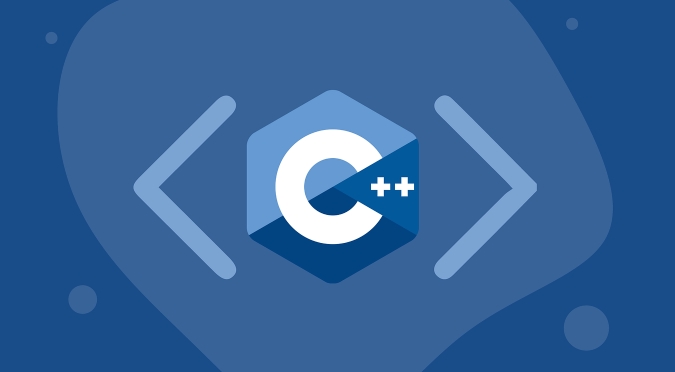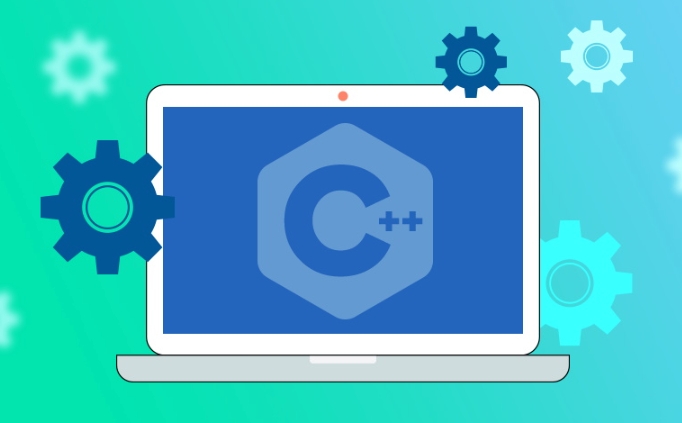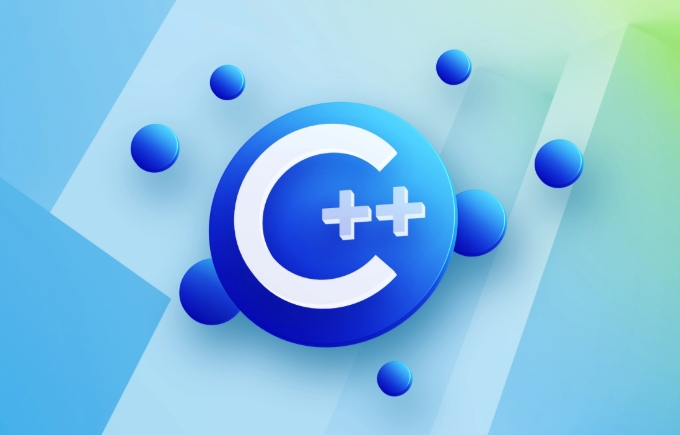C extern 'C' example
extern "C" is used to solve the linking problem when C calls C functions. 1. Use #ifdef __cplusplus to wrap extern "C" in the header file to ensure that the C compiler does not modify the name, and the C compiler can handle it normally; 2. The C implementation file is written in standard C syntax, and the target file is compiled and generated; 3. The main C program contains the header file and calls the function. When compiling, use g to link the target files of C and C, and finally successfully call the C function and output the result. Therefore, as long as the extern "C" protection function declaration is used correctly, a mixed compilation and link between C and C can be achieved.

extern "C" comes in handy when you call functions written in C code, or if you hope that the C code can call C functions. Its main function is to tell the C compiler: this part of the code uses the linkage method of C and does not modify the name of C.

Here is a simple extern "C" example showing how to call C functions in C.
? Project structure
. ├── hello.c // C implementation file ├── hello.h // C header file ├── main.cpp // C main program
1. hello.h —— C function declaration (with extern "C" protection)
// hello.h
#ifndef HELLO_H
#define HELLO_H
#ifdef __cplusplus
extern "C" {
#endif
void says_hello();
#ifdef __cplusplus
}
#endif
#endif // HELLO_H? illustrate:

-
#ifdef __cplusplusis to let the C compiler know that this is a C environment. - The
extern "C"block only takes effect when C compiles, and the C compiler ignores it. - This way of writing can ensure that this header file can be used both by C and C.
2. hello.c —— C function implementation
// hello.c
#include <stdio.h>
#include "hello.h"
void says_hello() {
printf("Hello from C!\n");
} ? This is a standard C function. When compiling, C compiler (such as gcc ) is used. The function name is say_hello in the symbol table.
3. main.cpp ——C calls C function
// main.cpp
#include "hello.h"
int main() {
say_hello(); // Call the C function return 0;
} ? Because the statement say_hello() is wrapped in extern "C" in hello.h , the C compiler will not name mangling this function name, and the linker can find the say_hello symbol generated by C compile.

? Compile and link
You need to compile the C and C files separately and then link them together:
gcc -c hello.c -o hello.o # Compile the C file g main.cpp hello.o -o main # Use g to link C and C target files
run:
./main # Output: Hello from C!
❗Why do you need extern "C"?
C supports function overloading, so the compiler will modify the function name (name mangling), such as:
-
void func()may become_Z4funcv -
void func(int)may become_Z4funci
The C compiler will not modify the name, func is func .
If you call a C function directly in C but do not add extern "C" , C will look for the modified name, and the link error occurred: undefined reference to 'say_hello' (actually the name does not match).
✅ Summary: Key points for using extern "C"
- Used to call C functions in C code, or let C call C functions (the latter requires additional processing).
- Wrap it in the header file with
#ifdef __cplusplusto ensure compatibility. - It only affects the link method and does not affect the syntax.
- Commonly found in system libraries and dynamic libraries (such as
.so/.dll) interfaces.
Basically that's it. Just remember: C adjusts C, add extern "C" protection to the header file, use the C compiler to compile the C file during compilation, and just link it with g .
The above is the detailed content of C extern 'C' example. For more information, please follow other related articles on the PHP Chinese website!

Hot AI Tools

Undress AI Tool
Undress images for free

Undresser.AI Undress
AI-powered app for creating realistic nude photos

AI Clothes Remover
Online AI tool for removing clothes from photos.

Clothoff.io
AI clothes remover

Video Face Swap
Swap faces in any video effortlessly with our completely free AI face swap tool!

Hot Article

Hot Tools

Notepad++7.3.1
Easy-to-use and free code editor

SublimeText3 Chinese version
Chinese version, very easy to use

Zend Studio 13.0.1
Powerful PHP integrated development environment

Dreamweaver CS6
Visual web development tools

SublimeText3 Mac version
God-level code editing software (SublimeText3)
 Using std::chrono in C
Jul 15, 2025 am 01:30 AM
Using std::chrono in C
Jul 15, 2025 am 01:30 AM
std::chrono is used in C to process time, including obtaining the current time, measuring execution time, operation time point and duration, and formatting analysis time. 1. Use std::chrono::system_clock::now() to obtain the current time, which can be converted into a readable string, but the system clock may not be monotonous; 2. Use std::chrono::steady_clock to measure the execution time to ensure monotony, and convert it into milliseconds, seconds and other units through duration_cast; 3. Time point (time_point) and duration (duration) can be interoperable, but attention should be paid to unit compatibility and clock epoch (epoch)
 What is a POD (Plain Old Data) type in C ?
Jul 12, 2025 am 02:15 AM
What is a POD (Plain Old Data) type in C ?
Jul 12, 2025 am 02:15 AM
In C, the POD (PlainOldData) type refers to a type with a simple structure and compatible with C language data processing. It needs to meet two conditions: it has ordinary copy semantics, which can be copied by memcpy; it has a standard layout and the memory structure is predictable. Specific requirements include: all non-static members are public, no user-defined constructors or destructors, no virtual functions or base classes, and all non-static members themselves are PODs. For example structPoint{intx;inty;} is POD. Its uses include binary I/O, C interoperability, performance optimization, etc. You can check whether the type is POD through std::is_pod, but it is recommended to use std::is_trivia after C 11.
 How to pass a function as a parameter in C ?
Jul 12, 2025 am 01:34 AM
How to pass a function as a parameter in C ?
Jul 12, 2025 am 01:34 AM
In C, there are three main ways to pass functions as parameters: using function pointers, std::function and Lambda expressions, and template generics. 1. Function pointers are the most basic method, suitable for simple scenarios or C interface compatible, but poor readability; 2. Std::function combined with Lambda expressions is a recommended method in modern C, supporting a variety of callable objects and being type-safe; 3. Template generic methods are the most flexible, suitable for library code or general logic, but may increase the compilation time and code volume. Lambdas that capture the context must be passed through std::function or template and cannot be converted directly into function pointers.
 What is a null pointer in C ?
Jul 09, 2025 am 02:38 AM
What is a null pointer in C ?
Jul 09, 2025 am 02:38 AM
AnullpointerinC isaspecialvalueindicatingthatapointerdoesnotpointtoanyvalidmemorylocation,anditisusedtosafelymanageandcheckpointersbeforedereferencing.1.BeforeC 11,0orNULLwasused,butnownullptrispreferredforclarityandtypesafety.2.Usingnullpointershe
 How to use OpenCV with C for image processing?
Jul 09, 2025 am 02:22 AM
How to use OpenCV with C for image processing?
Jul 09, 2025 am 02:22 AM
Using OpenCV and C for image processing is not complicated. You can quickly get started by mastering the basic process and common functions. 1. Installation and environment configuration: Ensure that OpenCV is installed correctly, Linux can be installed with package manager, Windows can use vcpkg or manually configure the path, and test whether it is normal through a simple program; 2. Basic operations of images: use cv::imread() to read, cv::imshow() to display, cv::imwrite() to save images, and pay attention to the necessity of path judgment and waitKey(); 3. Common image processing operations: including grayscale, Gaussian blur, Canny edge detection and threshold processing, which are usually used in the preprocessing stage; 4. Custom convolution kernel
 What is an abstract class in C ?
Jul 11, 2025 am 12:29 AM
What is an abstract class in C ?
Jul 11, 2025 am 12:29 AM
The key to an abstract class is that it contains at least one pure virtual function. When a pure virtual function is declared in the class (such as virtualvoiddoSomething()=0;), the class becomes an abstract class and cannot directly instantiate the object, but polymorphism can be realized through pointers or references; if the derived class does not implement all pure virtual functions, it will also remain an abstract class. Abstract classes are often used to define interfaces or shared behaviors, such as designing Shape classes in drawing applications and implementing the draw() method by derived classes such as Circle and Rectangle. Scenarios using abstract classes include: designing base classes that should not be instantiated directly, forcing multiple related classes to follow a unified interface, providing default behavior, and requiring subclasses to supplement details. In addition, C
 What is the mutable keyword in C ?
Jul 12, 2025 am 03:03 AM
What is the mutable keyword in C ?
Jul 12, 2025 am 03:03 AM
In C, the mutable keyword is used to allow the object to be modified, even if the object is declared as const. Its core purpose is to maintain the logical constants of the object while allowing internal state changes, which are commonly found in cache, debug counters and thread synchronization primitives. When using it, mutable must be placed before the data member in the class definition, and it only applies to data members rather than global or local variables. In best practice, abuse should be avoided, concurrent synchronization should be paid attention to, and external behavior should be ensured. For example, std::shared_ptr uses mutable to manage reference counting to achieve thread safety and const correctness.
 How to generate a UUID/GUID in C ?
Jul 13, 2025 am 02:35 AM
How to generate a UUID/GUID in C ?
Jul 13, 2025 am 02:35 AM
There are three effective ways to generate UUIDs or GUIDs in C: 1. Use the Boost library, which provides multi-version support and is simple to interface; 2. Manually generate Version4UUIDs suitable for simple needs; 3. Use platform-specific APIs (such as Windows' CoCreateGuid), without third-party dependencies. Boost is suitable for most modern projects, manual implementation is suitable for lightweight scenarios, and platform API is suitable for enterprise environments.







